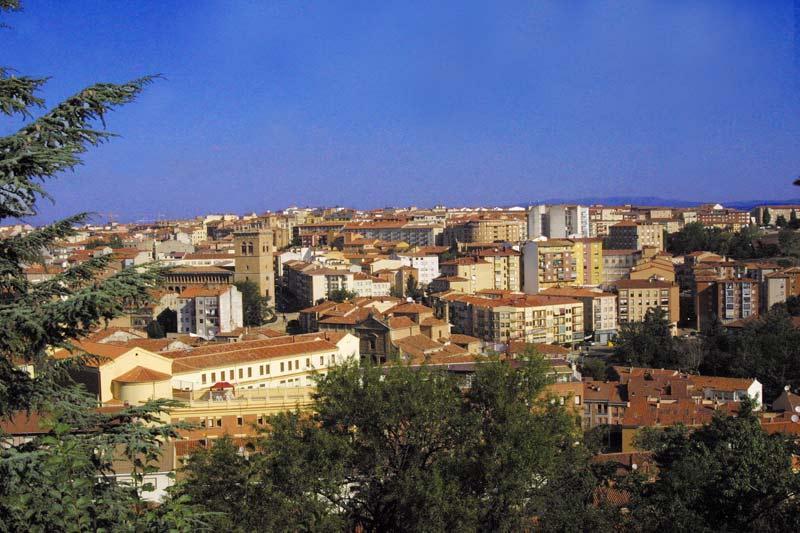Soria, Castela e Leão, Spain
Suggest Place to Visit
1628
Track to location with GPS |
 |
Soria entered the history of the hand of the Romans. However, on the current hill of the Castle, remains of an older settlement have been discovered, undoubtedly subject to the existence of Numancia. Bartolomé de Torres, in his Topography of the city of Numancia, assures that the castle of this city took the name of Oria from a Greek knight named Doric, captain of the Dorians, who arrived in Soria from Acaya. From this news some historians deduce that the first settlers of present-day Soria were the Dorians. However, nothing in this regard has corroborated archeology and for another group of experts the first settlers of Soria were the Swabians, whose kings, according to Tutor and Malo in their Compendio historia de las dos Numancias, established one of their courts there.
Both hypotheses have fallen into disuse over time because no document reliably accredits them. It seems logical to suppose that the word "Soria" derives from dauria, in turn derived from daurius, that is, Duero. To these versions, about the origin of the name of Soria, are added that of Pedro de Rúa, which derives from Soria de Sarra, the name of the city of Tire, and from Sarranos, its inhabitants, from which Sorianos comes. In a book of weapons it is narrated that when Alfonso VII, the Emperor rebuilt Soria, a large stone with an engraved sign that reminded of an "S" was discovered, which was added to the castle of Oria and gave the current voice Soria.
In the year 869, in the middle of the Arab conquest, Soria again jumped to the pages of History on the occasion of the uprising of Suleiman ben Abús against the Emir of Córdoba who sent his son, Al-Hakan, to quell the uprising.
The Christian conquest
During the 11th century it became an important strategic enclave due to its location next to the Duero and marked the boundary between Christian and Muslim domains in the so-called "Duero brand" or "Duero line". At the beginning of the 12th century, King Alfonso I the Battler conquered it definitively from the Muslims (Arabs) and repopulated it, placing the border further south; This is reflected in the legend ´´Cabeza de Estremadura´´ on the coat of arms of Soria, a motto imposed by the denomination that was awarded to the lands reconquered from the Moors by the Christian kings. However, Soria continued to be a strategic enclave due to the struggles for territory between the kingdoms of Castilla y León (under whose tutelage it passed in 1134), Navarra and Aragón.
Alfonso VIII maintained the independence of the Kingdom of León thanks to the help provided by the Sorians and, in gratitude, granted the city a series of privileges. In 1195, Sancho el Fuerte took the city and at the beginning of the 13th century it experienced one of its most flourishing periods thanks to its border situation. Commerce, in the hands of the Jews, made Soria an important city. The Jews expanded the aljama, located within the castle limits, and gave part of their wealth to the city. According to Martel “in the castle of Soria, inside the main wall, there is a spacious body in which in the past there were three hundred houses and a temple, which today lasts, although it is ruined. Many of these houses say that they belonged to Jews, and that population, with which there was outside, was called alhama ».
Almost all the economic activities of the Soria Middle Ages revolved around wool. Head of several royal glens, Soria controlled the summer shearing of its herds and the shipment of the precious fleece to Burgos and the ports of the north of the Iberian Peninsula. This great business regulated by the Mesta guaranteed the preeminence of the cattle owners: the noble Lineages that controlled municipal life. As a sign of its strength, Soria obtained one of the precious representative positions among the 16 cities with the right to send attorneys to the Cortes of the kingdom of Castile, and hosted some of its meetings. On the other hand, the political instability of the last third of the fourteenth century allowed Henry II to cede it as payment to the French mercenary Bertrand Du Guesclin, who ran into open hostility from a population that did not wish to abandon the royal domain.
Decline
In 1492, the decree of expulsion of the Jews, brought the economic and social decline of Soria. During the reign of the Catholic Monarchs, the historical narrative of Soria was interrupted because after the union of the kingdoms of Aragon, Navarra and Castile the city ceased to be a strategic enclave. This situation lasted during the Modern Age, in which the decline in the profitability of cattle ranching put the city in a situation of very serious economic and demographic deterioration. On the other hand, local leaders at the end of the 16th century were unwilling or unable to support Bishop Acosta's veiled plan to move the headquarters of the diocese from Osma to Soria, which would have partially alleviated the decline of the city.
Soria recovers its strategic-military role in the history of Spain with the War of Succession, defending the cause of Felipe V, and protecting the border line from the Aragonese claims (1706-1707).
In 1808, after the French invasion of the Iberian Peninsula, an Armament and Defense Board was established in Soria that organized the Numantinos regiment or Battalion active on the Logroño and Sigüenza fronts. On November 20, 1808, the French troops appeared at the gates of Soria and surrendered to looting. The city was in flames and it was necessary to wait for the second half of the 19th century for it to recover its population and wealth indexes.
At the fall of the Old Regime, the town of constitutes a constitutional municipality in the region of Castilla la Vieja, a party of Soria that in the 1842 census had 942 homes and 5,400 residents.
At the end of the 20th century, the term of the municipality grew because it incorporated Oteruelos and Pedrajas.
Present
Currently Soria can be defined as a small capital (39,344 inhabitants), but active thanks to the tourism industry, which partly preserves its historical and medieval character, and corners, which exude that magic that has seduced travelers from all over the world. time. The city tries to make the most of the literary patina granted by its leading role in several of the Legends of Gustavo Adolfo Bécquer or in the verses of Antonio Machado and Gerardo Diego.
On the other hand, communications are scarce, which contributes to the stagnation of its growth. Study and work opportunities for young people are reduced. There are many who leave the city to study and do not return. The successes of the athletes led by Enrique Pascual from Soria (Abel Antón, Fermín Cacho, Reyes Estévez) and the soccer and volleyball teams of the Club Deportivo Numancia have given Soria a certain sporting reputation that has an impact on the increase in the number of visitors to Weekend.
Soria is a city, capital of the province of Soria, in the Autonomous Community of Castilla y León (Spain). Its municipal term has an area of 271.77 km².
Geography
Situation
It is on the banks of the Duero River, in its upper course. Its municipal term is made up of the city of Soria itself, the Las Casas neighborhood 1 km from the city and three towns: Oteruelos, Pedrajas and Toledillo.
Weather
The climate of the city of Soria is Mediterranean-continental. Winter is characterized by being long and cold (January 2.9 ° C), producing about 90 days of frost annually. For its part, summer is warm (20 ° C July and August), with maximum temperatures around 28 ° C, which can reach 35 ° C on days of heat, but the summer heat is softened by a few cool nights of about 10 ° C. The precipitations are moderate (570 mm a year) being spring the rainiest season, highlighting the months of April and May, in winter there can be snowfalls. It is the capital of the coldest province in Spain.
Religious monuments
Soria has a superb religious monumental catalog full of Romanesque style specimens. Among the most prominent are the following:
Church of San Juan de Rabanera
Church of Santo Domingo
St. Peter's Co-Cathedral
Arches of San Juan de Duero
Church of San Polo
Church of San Nicolás
Church of Santa María la Mayor
Church of San Agustín el Viejo
Church of San Ginés
Hermitage of San Saturio.
In Soria there are religious monuments of other styles and, although of Romanesque origin, they have not been preserved as such to this day. To these correspond:
Hermitage of San Saturio
Church of Our Lady of Espino
Hermitage of Our Lady of Mirón
Convent of Our Lady of Carmen
Convent of Our Lady of Mercy
Hermitage of Our Lady of Solitude
Convent of San Francisco
Church of San Salvador
Convent of Santa Clara
Hermitage of Santa Bárbara
Convent of San Agustín ´´el Nuevo´´
Convent of the Immaculate Conception
Civil Monuments
Soria Castle
Palace of the Counts of Gómara de Soria
Soria Main Square
San Clemente Square
Plaza de San Esteban - Plaza del Olivo
Knights Street
Old Customs Street
Alameda de Cervantes
College of the Society of Jesus
Soria Bullring
Bernardo Robles Square
Environment
In its term and included in the Natura 2000 Network the following places:
Place of Community Interest known as Riberas del Río Duero and tributaries, occupying 181 hectares, 1% of its term.
Place of Community Interest known as Robledales del Berrún, occupying 123 hectares, 1% of its term.
Place of Community Interest known as Sabinares Sierra de Cabrejas, occupying 199 hectares, 1% of its term.
Popular Festivals
Holy Week Soriana
Holy Week Soriana; Declared a Festival of Regional Tourist Interest of Castilla y León.
Festivities of San Juan or the Mother of God
Festivities of San Juan or the Madre de Dios (Soria), begin the Thursday after the festival of San Juan (June 24); Declared Festivals of National Tourist Interest.
Patron saint festivities in honor of San Saturio Anchorite
Festivities of San Saturio (Soria), from October 1 to 5.
Comments
We don´t have yet any comments about:
Soria
Soria
Be the first to leave a comment as it is very important to inform other people
Outros locais a visitar
Within a radius of 20 km from:Soria
San Juan de Duero |
| 2,2 Km |
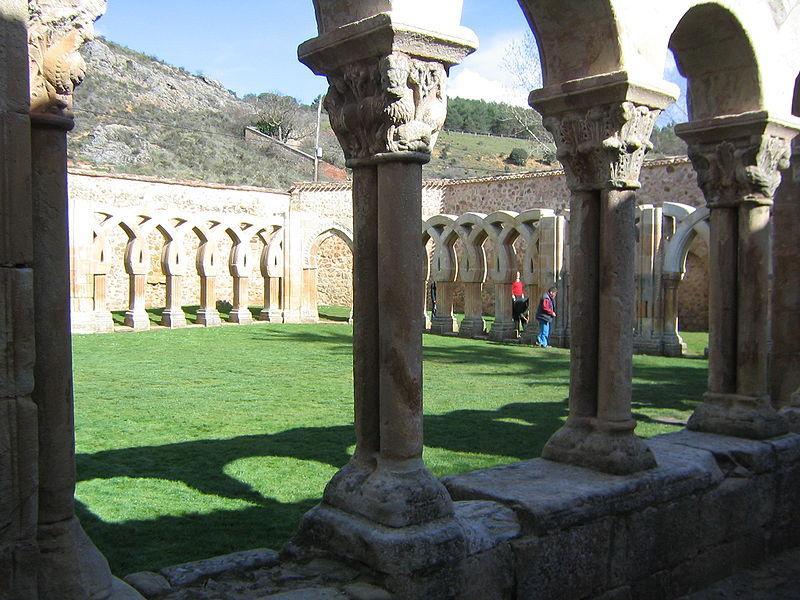 |
Greater Square of Soria |
| 2,7 Km |
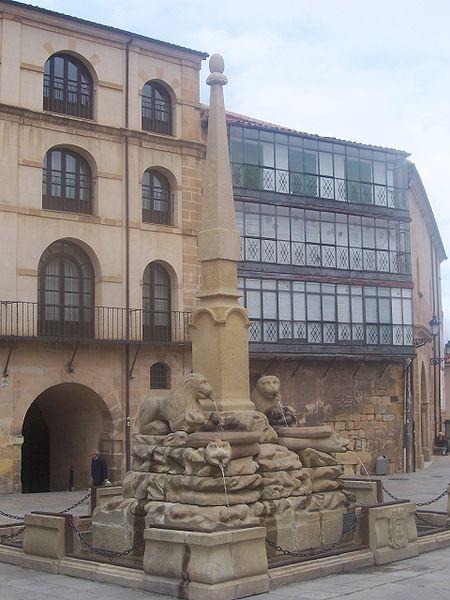 |
Counts of Gómara de Soria Palace |
| 2,8 Km |
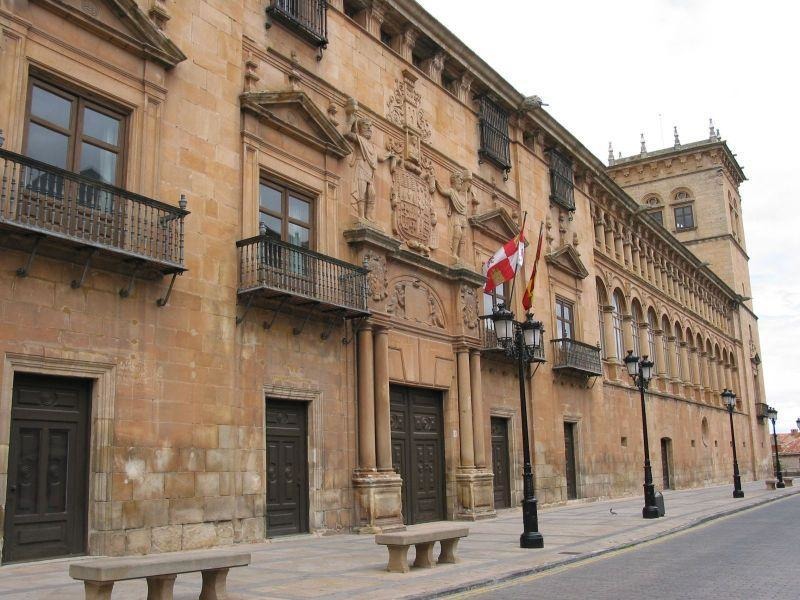 |
Counts of Gómara de Soria Palace |
| 2,8 Km |
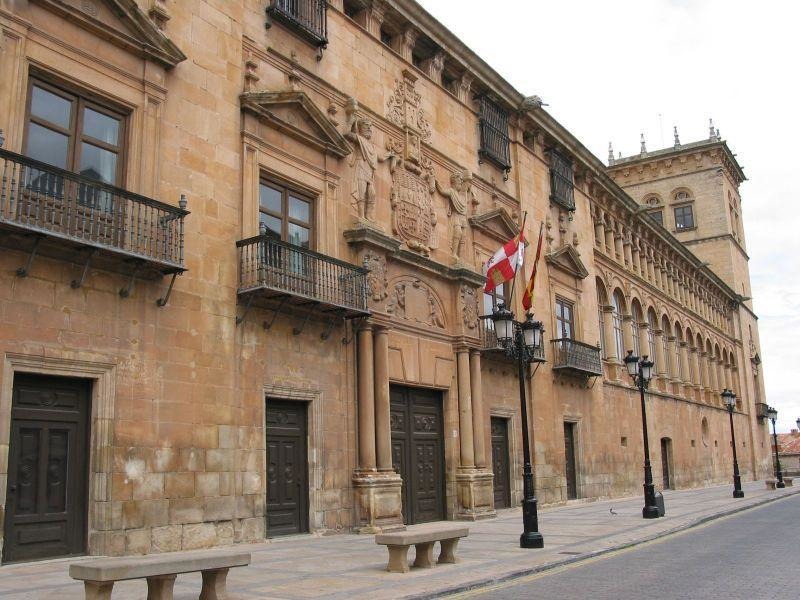 |
Hotel reservation near Soria within a radius of 20 km
Why to book with TOURISTIC ROUTES
The best prices
Our partnerships with the world´s largest operators offer research on the best market prices.
More options
At Rotas Turisticos you can book the hotel, buy the air ticket, book the transfer from the airport to the hotel and vice versa, book the local excursions, rent the car, take travel insurance and consult the places to visit and where to go.
Holiday Tips & Destinations
Hundreds of holiday destinations with all the options that allow you to easily choose the destination that best suits your dream vacation.
TOURISTIC ROUTES
Links


